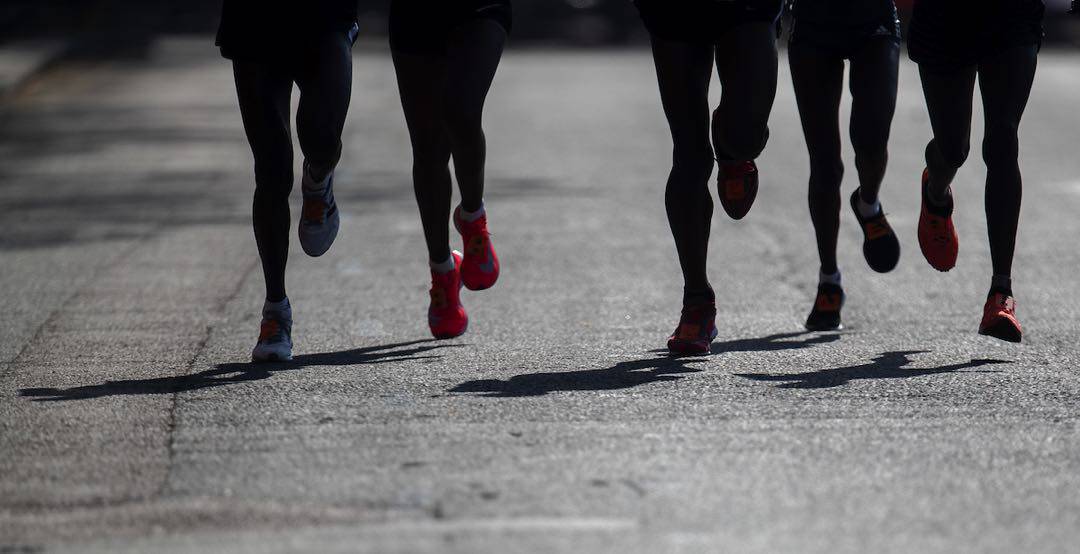Are you experiencing ankle pain when you go running? If so, you definitely don’t want to ignore it. The ankle joint, which is actually comprised of three articulating joints, bears much of the physical brunt of your running (along with the feet and knees).
The ankle is truly a feat of biomechanical engineering in that although its structure is relatively ligamentous and bony, it withstands a very high amount of compressive and shear forces while simultaneously providing critical stability for your legs. In fact, research has shown that the ankle bears a force equal to up to thirteen times your body weight during activities like running.
The ankle isn’t without its weaknesses, however, so don’t miss this quick guide to protecting yourself against common running ankle injuries:
Preventing Ankle Injuries
A 2015 study found that of all the injuries amateur runners incur in their training, over 40 percent are to the feet and ankles. Common ankle injuries include sprains where a ligament gets overstretched (and may even tear) often as a result of rolling or severely twisting the joint. Other running injuries which affect the ankle include stress fractures and varying types of tendonitis.
While it’s not possible to completely avoid ankle injuries, you can certainly take steps to prevent them. Experts recommend that runners, especially those who have experienced an ankle injury before, follow these helpful steps to safeguard their ankles from harm.
Warm up properly
Gearing your body up for a run involves both gradually increasing your heart rate as well as dynamically stretching important muscles and loosening your joints. Warming up may involve taking a quick walk before you run, practicing a short yoga session, doing plyometric jump squats and lunges, or simply jogging in place. For your ankles, consider doing joint-specific stretches that exercise and strengthen the tendons, ligaments, and muscles which support the joint itself.
-
Ankle alphabet – sitting on a chair, hold one foot up at a time and spell out the alphabet with your big toe in the air
-
Ankle circles – standing or sitting, hold one foot up at a time and rotate the ankle to draw circles with your big toe in the air
-
Calf stretches – do calf raises one leg at a time and yoga poses like Downward-Facing Dog
Equip Your Feet
Experienced runners know that the shoes you wear on your feet are just as important as any other piece of gear you get for running. Worn out old running shoes can both alter your body mechanics and movement patterns as well as increase your risk for injury. Make sure you are running with well-fitting shoes that offer good arch and ankle support and suit the terrain you are running on, i.e. road vs. trail.
Build Up Gradually
Whether you are adding distance week by week or trying to incorporate more inclines into your daily run, it is critical that you practice moderation. Doing too much too fast might feel great at first but it can seriously endanger the health of joints like the ankle. Stick to adding no more than 10 percent of your distance week by week and progressively add in hill work accordingly.
Get Extra Help
If you have experienced an ankle injury before, like a sprain, you might be considering wearing a supportive orthotic aid like an ankle brace to prevent rolling and twisting your ankle again. Experts say that orthotic aids like this can play an important role in injury prevention as long as they are somewhat flexible and fit nicely into your existing running shoe. Ankle braces have not been shown to reduce the severity of ankle injuries, however, so if you are concerned about re-injury, make sure that physical therapy is as much a part of your recovery plan as bracing.
Avoid Hazards
It goes without saying, but practice extra caution when running over and through hazards that can increase your risk of slipping, tripping, stumbling, or sliding. Trail running after a thunderstorm, for example, could mean you encounter many more slippery areas, rocks, and debris that could leave you with a severe sprain or worse. When in doubt about the safety of your running, especially during slick and icy winter months, focus on safer running routes or finding ways to cross-train indoors (i.e. riding a stationary bicycle, swimming, etc).
